Ordinary housewives, vegetarians and gourmets love this root crop for its taste and good for the body. Proper planting of beets and care in the open ground ensure normal growth, the manifestation of the best qualities of the selected variety. Experienced summer residents and farmers are advised not to rush to sowing the soil, since seeds and seedlings need warm weather and the absence of frost.
Material Content:
How and when to plant beets in open ground?
Beet mumps give 5 sprouts, which in the early days develop slowly. After the emergence of seedlings, competition begins between them for light, water and nutrients.
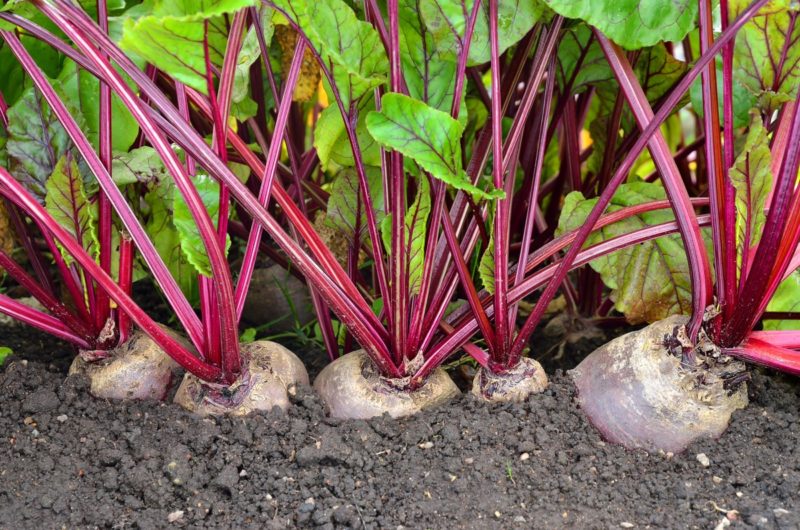
To avoid weakening the plants, it is recommended to soak the seeds before sowing.
Before planting beet fruit, beets are left for 3 hours in a weak solution of potassium permanganate or in water with the addition of growth stimulants. You can wet the seeds in warm water with the addition of ½ tsp. complex mineral fertilizer (NPK). After 2-3 hours, washed with running water, spread on a damp cloth and left for 3 days. During this time, the seeds swell and germinate faster.
Soil preparation and seed sowing
When determining the timing of sowing seeds in the soil, it is necessary to choose the time when the top soil layer at a depth of 8–15 cm will have a temperature of 7–10 ° C. This period falls at the end of April and May in the central and northern regions of the temperate climate. In the south - at the end of March and the beginning of April.
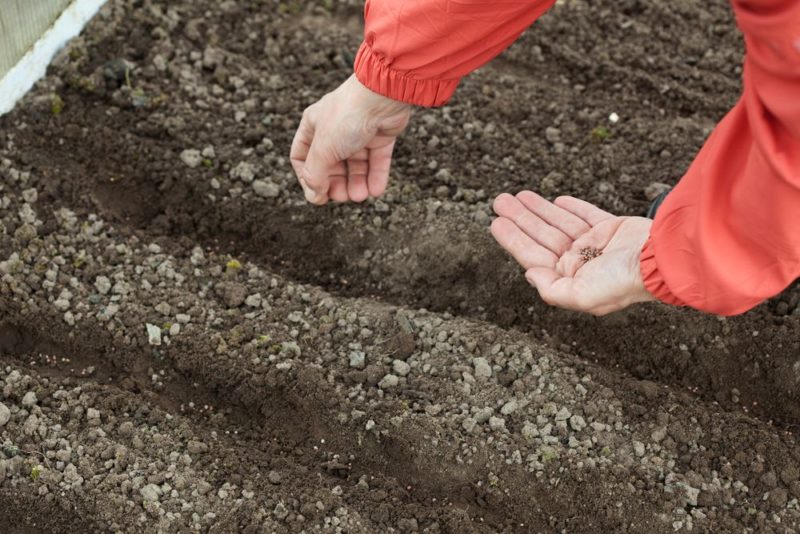
Low temperatures inhibit or completely stop the development of the root. The stems of the plant are weak, elongated. Even small frosts provoke the release of arrows with inflorescences. The same result can be expected when sowing in the fall.However, many summer residents and vegetable growers recommend planting beets in late October. In this case, it is recommended to sprinkle the area with peat.
How to sow beets in open ground:
- On ridges they sow in longitudinal or transverse grooves after 20–25 cm.
- On sandy humus soils, narrow double-line tapes are made on a flat surface, and seed grooves are arranged at a distance of 20-30 cm from each other.
- Grooves are well watered to a depth of 12 cm (if there was no rain).
- Seeds are placed individually at a distance of 2-3 cm from the surface, on light soils - 4-5 cm.
Nutrient substrates with a neutral or slightly alkaline pH are preferred. If the soil is acidic, then liming is carried out (1 kg of lime per 1 m2). Before sowing, fertilizers are applied: 20 g of ammonium nitrate or sulfate, 15 g of potassium chloride and 30–40 g of superphosphate per 1 m2. Compost requires 2-3 kg per 1 m2.
Sprouted seeds germinate on the third or fourth day. If the planting material was dry, then germination can be expected in a week, provided that the soil is well moistened. With irregular moisture, the appearance of seedlings is delayed for two weeks. The growing season before harvest is 11-17 weeks.
Planting seedlings
This method allows you to avoid thinning seedlings, which must be carried out 3-4 times when growing beets in open ground. Seedlings are prepared in regions with a cold climate, where the plant does not have enough heat at the beginning of the growing season. Sown in early May in a greenhouse, about a month later transplanted into the open ground.
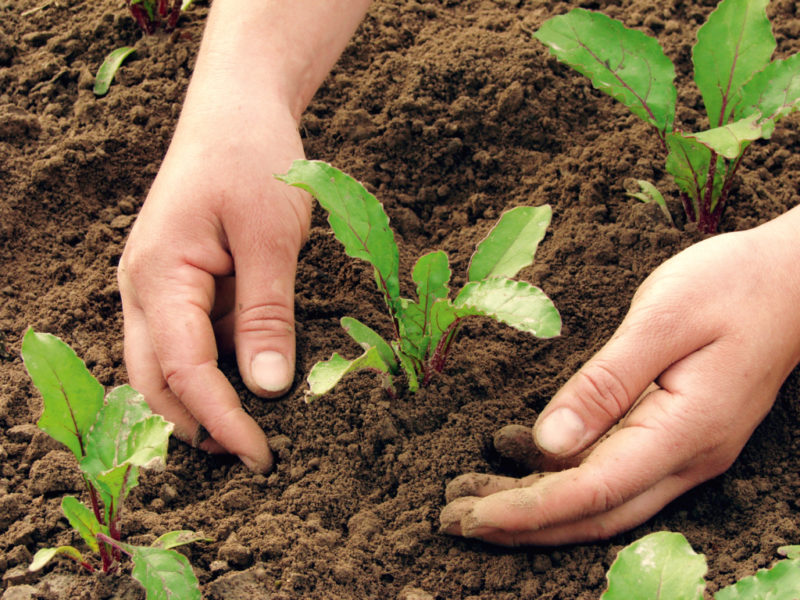
To obtain an early crop in the middle strip, seedlings are grown in indoor mini-greenhouses. Sowing time is mid or late March. The boxes are filled with a nutrient substrate, the previously soaked seeds are sown to a depth of 2-3 cm. Beets are demanding for light, so they put boxes or other containers with seedlings close to the window glass or illuminate with a lamp.
Read also: how to cook beets in the microwave
Ready seedlings have a height of about 8 cm, 3-4 developed leaves. In May - June, young plants are carefully transplanted into holes in the beds, trying to protect the future root crop from damage as much as possible. Beetroot tolerates transplanting normally, but only with good irrigation and soil warming up to 7–10 ° С. It is recommended that the first 2-3 days cover the seedlings to protect against drying out and sunburn.
Beet Care
High-quality root crops can be obtained only with sufficient moisture in the soil. It is also important to protect against weeds, fertilize the soil. Inadequate care for beets leads to the fact that unsweetened root crops of irregular shape grow.
Thinning beet sprouts
For the first time, shoots are left at a distance of 1-2 cm from each other. Further, another 2–3 thinning of young plants 6–10 cm high will be required. They can be used as seedlings. It is advisable to thin out and transplant beets in cloudy weather.
After the final breakthrough, the distance in the rows between the plants is 15–20 cm. Young root crops that are edible are obtained. As a rule, thinning beets are used for associated weed removal.
Watering and feeding
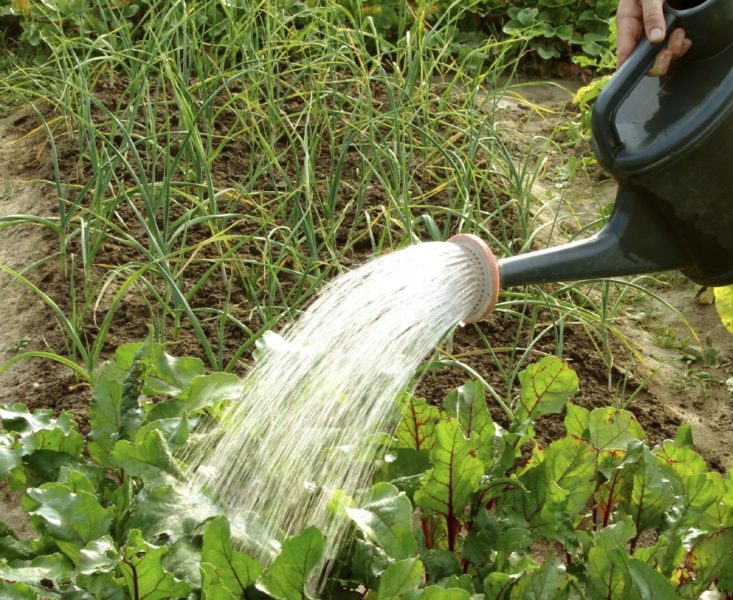
Beet growth is very dependent on the availability of water. In a drought, the plant will not die, but gives small-sized ligneous root crops. Water the beets at the beginning of the growing season 3-4 times a week. Water consumption is 2-3 bucket per 1 m2. Then reduce irrigation to 1 time per week. About 2 weeks before the planned harvest, watering is stopped. The abundance of moisture during this period can cause cracking of root crops.
Processing and fertilizer
Top dressing is carried out 3 weeks after planting. Then apply fertilizer every 2 weeks. After the first thinning, the beets need to be fed with nitrogen and potassium. You can use organic fertilizer, ash. Contribute to the grooves made at a distance of 5 cm from the seedlings.The late application of nitrogen fertilizer leads to the accumulation of nitrates in root crops.
Pests and beet diseases
Healthy leaves are green with a glossy surface and red veins. White, gray, brown, and black spots can occur with a fungal infection. The most common disease is downy mildew. In this case, it is treated with the fungicidal preparation Fitosporin. Soaking seeds before sowing in potassium permanganate solution helps to avoid infection by fungi.
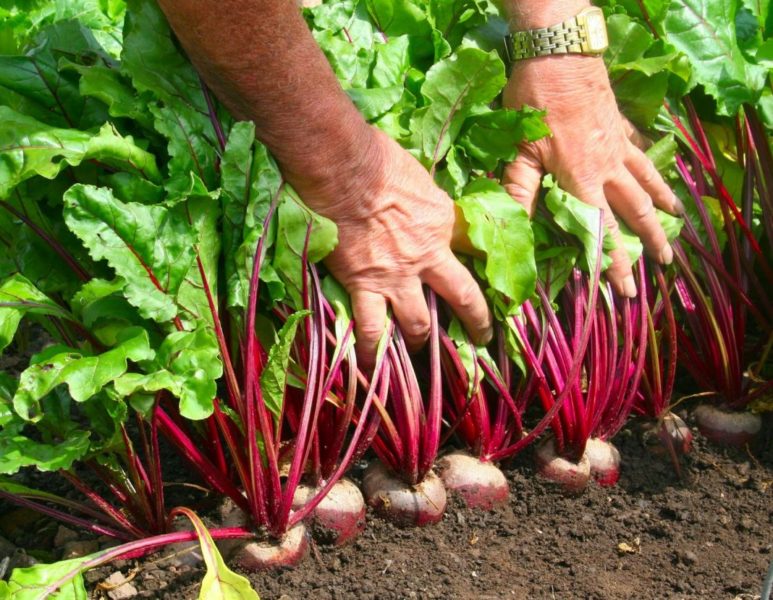
Pests eat beetroot leaves and damage root crops. The leaf blades are affected by a beet flea - a black insect 2 mm in size. The pest flies well and jumps. Fleas eat leaf tissue, leaving translucent patches. Beetroot leaves also damage the larvae of a mining fly. The best method of pest control is prevention. Be sure to remove the weeds on which flies and fleas are hiding. You can treat the plants with karate.
Harvesting and storage
Early ripe varieties are harvested 2–2.5 months after planting. If the seeds were sown in mid-May, they begin to harvest early root crops in late July. Mid-season beets grow up to ripening 2.5–3 months. Root crops are harvested in August or early September. Late-ripening varieties are harvested after 3-4 months.
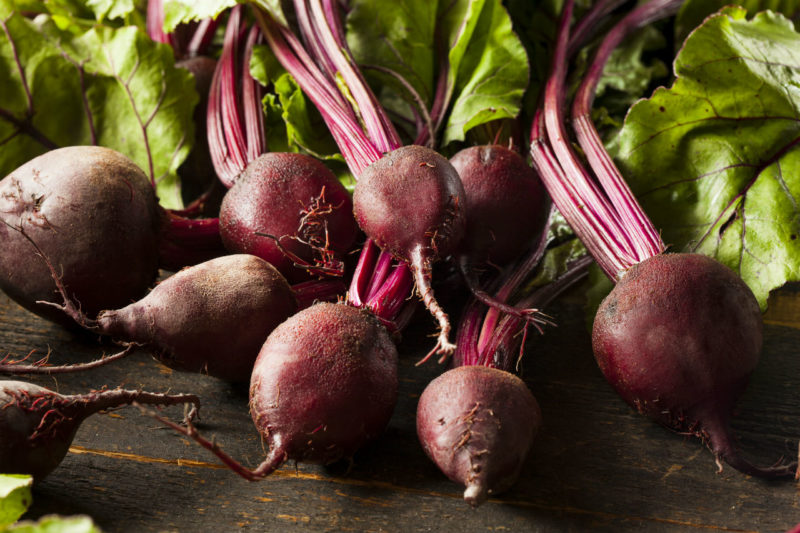
It is undesirable to harvest beets ahead of the time allotted by nature and the creators of the variety for the complete ripening of the root crop. It is better to accumulate sugars and vitamins in the crop in the fall, when air temperature decreases. Pull with harvesting until late autumn is not necessary. Early frosts damage the tops of root crops, they are worse stored.
Beets are harvested by pulling from the soil for leaves. Then they are removed - cut with a sharp knife. As a rule, beets of medium and late ripening are well preserved in cellars and vegetable stores at a temperature of 2 ° C.
What can be planted after beets and what can be combined with planting beets?
It is rare for vegetables to use black steam. Usually, in the crop rotation - crop rotation - for beets, plots are designated where last year beans, peas, onions, cucumbers, tomatoes, and pumpkins were grown. These are the best predecessors, but can be planted after potatoes and cabbage.
You can not stir the crops of beets after carrots. These crops have the same requirements for growing conditions and similar diseases.
Beets are not recommended to be grown next to spinach and parsley. A more harmonious neighborhood with onions, zucchini, beans. Beetroot responds well to care, pleases with an excellent harvest in the presence of moisture and minimal care.












